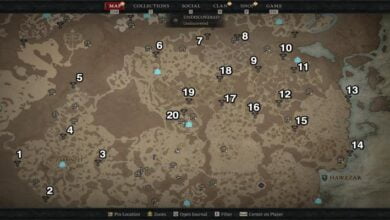Analyzing Player Impact and its Distribution within Teams
Introduction
In the highly-anticipated EMEA LCQ event, we witnessed some extraordinary gameplay and witnessed Team Liquid’s remarkable journey to the Champions stage. Throughout the tournament, I took it upon myself to track and calculate two VALORANT statistics that had never been used before: a player’s tournament KAST percentage and a team’s Impact Distribution Coefficient.
KAST Percentage: Quantifying Impact
KAST, which stands for Kills, Assists, Survived, and Traded, is a crucial metric to measure a player’s impact in a round. To calculate the KAST percentage, we divide the total rounds where a player made an impact by the total number of rounds played. Unsurprisingly, the players on better-performing teams exhibited higher KAST percentages.
Impact Distribution Coefficient: Evaluating Equality
The Impact Distribution Coefficient is a modified version of the Gini coefficient from economics. It assigns teams a value ranging from 0 to 1, where 0 represents absolute equality in terms of impact distribution, and 1 represents complete inequality. Teams are ranked from 1 to 8, with rank 1 being the most evenly distributed and rank 8 being the least.
In-Depth Analysis
Please note that this article is a concise summary of my extensive research on this topic. For a more detailed study, I invite you to download the full paper I have written [HERE](insert link). Whether you are interested in delving into the practical applications of these statistics or deepening your understanding of player impact at the highest level of VALORANT, I highly recommend perusing the complete paper.
KAST Percentage Breakdown
Below, you can observe the KAST percentages of every player who participated in the EMEA LCQ. It is no surprise that players from better-performing teams boasted higher KAST percentages.

Team Impact Distribution Coefficient
Now, let’s examine the Impact Distribution Coefficient (IDC) of each team, which reflects the evenness of impact distribution. These coefficients, derived from the aforementioned KAST percentages, demonstrate significant disparities between teams.

Correlation between IDC and Round Win Percentage
When comparing the IDC data to each team’s round win percentage during the tournament, we observe a correlation coefficient of -0.7233, which is statistically significant at the 5% level. This implies that as a team’s IDC increases (indicating greater unevenness in impact distribution), their round win percentage decreases.

Unequal KAST in Rounds
Moreover, I delved into the rounds where one team had more players making an impact than the other. Out of a total of 736 rounds analyzed, in 663 of them, one team had an advantage in impact distribution. Strikingly, the team with more impact emerged victorious in 93.82% of these rounds.
Conclusion
These statistical insights undoubtedly offer valuable perspectives on player impact and its allocation within teams. If any of these statistics pique your interest, I encourage you to read my entire paper [HERE](insert link). Moving forward, I aim to continue providing detailed statistical analyses for other regions as well.
Follow me on Twitter @BigTimeVAL1 for more intriguing updates!


